Lots Of small brown Dots on fiddle leaf fig - Ficus lyrata
sarahwunsch
9 years ago
Featured Answer
Sort by:Oldest
Comments (52)
tapla (mid-Michigan, USDA z5b-6a)
9 years agosarahwunsch
9 years agoRelated Discussions
Pruning Ficus Lyrata (fiddle leaf fig)
Comments (646)Hello everyone! I think from everything I've read in this thread that my plant has been suffering from overwatering and/or soggy soil. I got it in late January and after my second watering it developed a few very small brown marks on the edges of the leaves. Suspecting over watering as the cause, I let it dry out (until it no longer felt damp and spongey through the drainage hole) before watering again. This process meant it was about 2.5-3 weeks between watering and sadly the brown and blackish spots on the leaves have continued to get worse after every watering. With what I've read I now believe the soil is just staying soggy too long. (FYI when I water I give it about 3 cups, allowing one cup at a time to soak in. At least half a cup flows out the drainage holes on the third cup of water.) My plan now is to repot with a soil amendment and a wick. I'd like to do some root pruning as well since I can barely get the moisture meter in the soil through the roots, but I think I read in a previous post from Al that I should wait until it starts growing again and the weather is warmer. In the mean time, will mixing my regular potting soil with perlite as well as adding a wick offer a noticeable improvement for drainage for now? Then in the summer I can source better soil mix components and address any potential root issues? Alternatively, I can just water with more frequency and use less water until summer? Here are some photos of the FLF in the late afternoon on a cloudy day. This plant lives about 3 feet away from a S/SW window and doesn't receive any direct sunlight. Here is evidence that the plant has dropped a few leaves. The six leaves that fell off were the worst looking, and the leaves with the spots (shown above) are headed in that direction. And here is the beautiful new growth since I got it in late January (though now it has stopped and the tiny bud here doesn't seem to have changed in about a month): I look forward to learning even more, so thanks in advance for your advice and expertise :)...See MoreFiddle Leaf Fig/Ficus Lyrata newbie
Comments (16)Hi, Sarah. The cultural issues most likely to cause wilting are over-watering, under-watering, high temps, and a high level of dissolved solids (salts) in the soil solution. The later is usually accompanied by necrosis of leaf margins on lyrata, unless the high level of salts was due to a very recent fertilizing. If it wilted while the soil was still damp, your issue would probably be related to the effects of over-watering and/or the heat. Water and nutrient uptake is an energy driven process. It takes oxygen to burn (convert) the food (carbohydrates - from photosynthesis) into the energy that drives root metabolism. Too much water in the rhizosphere (root zone) means too little air means not enough O2 means the work of water uptake is compromised. The heat increases the rate of respiration increases water demand and exacerbates the issue. I would: Shade the pot to help keep roots cool if the plant has direct sun hitting it Use a wood dowel or bamboo skewer to test the soil, waiting to water until the soil is nearly but not quite dry. When soil is at first dry to the touch, there is still 10-15% additional water left that the plant can access - so a built-in margin for error. Flush the soil thoroughly the next time the plant needs watering by pouring a volume of water equal to the pot capacity up to 10 times, using room temp water; this, to rid the soil of accumulating salts. Then, fertilize the plant with a soluble fertilizer with a 3:1:2 NPK ratio. RATIO is different than NPK %s - ask if you'd like me to explain the difference. After flushing the soil, water on an as needed basis. Don't let the soil remain saturated for extended periods. I can also help you learn how to deal with soils that hold too much water, if you think that's an issue. I'll wait on your comments before I offer anything else. Al...See MoreFiddle leaf plant (spots)
Comments (1)I'll go ahead and upload the pic onto the page for convenience, if you don't mind... As for the brown spots...I'm assuming the spots are the ones visible on the underside of the uppermost leaf in the picture illuminated by the light. Do the spots in this topic look similar? http://forums2.gardenweb.com/discussions/1493745/lots-of-small-brown-dots-on-fiddle-leaf-fig-ficus-lyrata As for the white circles, I can't see them in that picture. Would you mind uploading a pic of those? As of now I'm going to guess that they're leftover salts/minerals from the water (from the misting) as it evaporates from the leaf. How often do you water?...See MoreMoving Ficus Lyrata/Fiddle Leaf Fig Outside for Summer
Comments (50)I don't get how people can't seem to live in a place instead of just squat there. The same people who went through (and PAID for!) the naturalization process and uprooted their lives abroad to get to a country can't let go of the old one. I get ethnic food and fond memories, but if you make a conscious effort to live near and exclusively interact with other ex-pats in the native language, what can you learn and know about the culture and people of your new home? When i have lived abroad (as opposed to simply traveled), i have left my American ways and language at the airport for me to collect on my way back to the US. I never looked for other Americans or spoke English. I interacted with and lived among the people with an open mind. If my language was not sufficient to get my point across, I invited people to correct me so that i learned. I ate the food, i visited the landmarks and learned about their significance. What would i have gained if i brought my flag and waved it to ward off people that were not like me, and only interacted with other Americans? Nothing but distrust of the people and culture of the place i called home. I would feel isolated and unaccepted by everyone around me, unaware that i CAUSED it myself. Everyone would seem like a racist from that perspective, wouldnt they?...See Moreken_adrian Adrian MI cold Z5
9 years agotapla (mid-Michigan, USDA z5b-6a)
9 years agosarahwunsch
9 years agorina_Ontario,Canada 5a
9 years agosarahwunsch
9 years agotapla (mid-Michigan, USDA z5b-6a)
9 years agoChristine Tsao
6 years agolast modified: 6 years agotapla (mid-Michigan, USDA z5b-6a)
6 years agoChristine Tsao
6 years agotapla (mid-Michigan, USDA z5b-6a)
6 years agogracelanier
6 years agolitterbuggy (z7b, Utah)
6 years agotapla (mid-Michigan, USDA z5b-6a)
6 years agornlabarnes36
6 years agoleacharbonneau
6 years agotapla (mid-Michigan, USDA z5b-6a)
6 years agoS H
6 years agolast modified: 6 years agowannerce
6 years agowannerce
6 years agolast modified: 6 years agolitterbuggy (z7b, Utah)
6 years agowannerce
6 years agolast modified: 6 years agocasedietz
6 years agolast modified: 6 years agolitterbuggy (z7b, Utah)
6 years agorobin98
6 years agoPhilipp Marc
6 years agonatarizh
6 years agotapla (mid-Michigan, USDA z5b-6a)
6 years agoDanielle S
6 years agotapla (mid-Michigan, USDA z5b-6a)
6 years agoeleanor31
6 years agolaticauda
6 years agoeleanor31
6 years agolaticauda
6 years agoErin Turner
5 years agolast modified: 5 years agotapla (mid-Michigan, USDA z5b-6a)
5 years agoAlanoud Alshuraym
5 years agoD VH
5 years agolasweet92
5 years agoHU-713615036
5 years agolast modified: 5 years agotapla (mid-Michigan, USDA z5b-6a)
5 years agolast modified: 5 years agoHU-713615036
5 years agolast modified: 5 years agotapla (mid-Michigan, USDA z5b-6a)
5 years agoHU-785279938
5 years agotapla (mid-Michigan, USDA z5b-6a)
5 years agolasweet92
5 years agoD H
5 years agoD H
5 years agolast modified: 5 years ago
Related Stories

HOUSEPLANTSPlay Up Some Fiddleleaf Figs for a Lively Indoor Tune
Strike a dramatic chord in a minimalist scene or a country note in a rustic setting — fiddleleaf fig plants harmonize with any style
Full Story
GARDENING GUIDESGot Frost-Damaged Plants? How It Happens, and When and How to Prune
Crispy brown leaves are a sure sign that Jack Frost has been to your neighborhood
Full Story
LIVING ROOMSNew This Week: How to Punch Up a Modern White Living Room
Consider these easy combinations to bring personality, color and texture to your neutral backdrop
Full Story
KITCHEN DESIGNHouzz Call: Tell Us About Your First Kitchen
Great or godforsaken? Ragtag or refined? We want to hear about your younger self’s cooking space
Full Story
HOUSEPLANTS8 Essentials for Healthy Indoor Plants
Houseplants add so much to our homes — and can thrive when grown in the right conditions. Keep these tips in mind
Full Story
HOUSEPLANTS10 Top Plants to Grow Indoors
Brighten a room and clean the air with a houseplant that cascades artfully, stretches toward the ceiling or looks great on a wall
Full Story
CONTAINER GARDENSHappy Houseplants, Happy People
Potted plants add life and beauty to a room. Learn easy ways to keep them healthy
Full Story
DECORATING GUIDESThe Dumbest Decorating Decisions I’ve Ever Made
Caution: Do not try these at home
Full Story

DECORATING GUIDESDitch the Rules but Keep Some Tools
Be fearless, but follow some basic decorating strategies to achieve the best results
Full Story



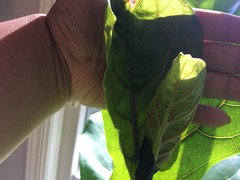




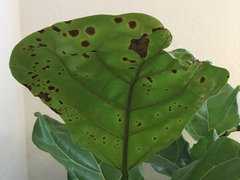


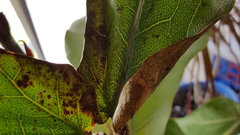








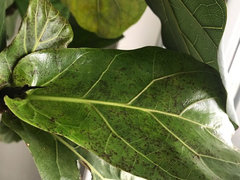


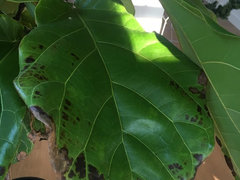

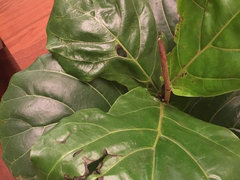









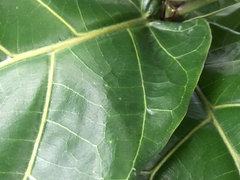
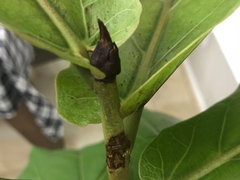

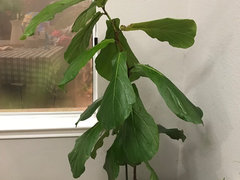





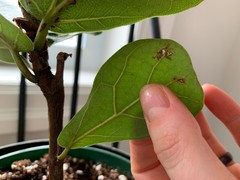








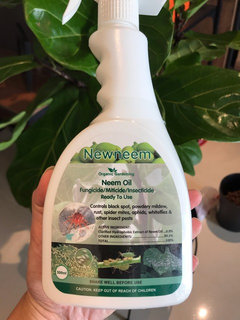



sarahwunschOriginal Author